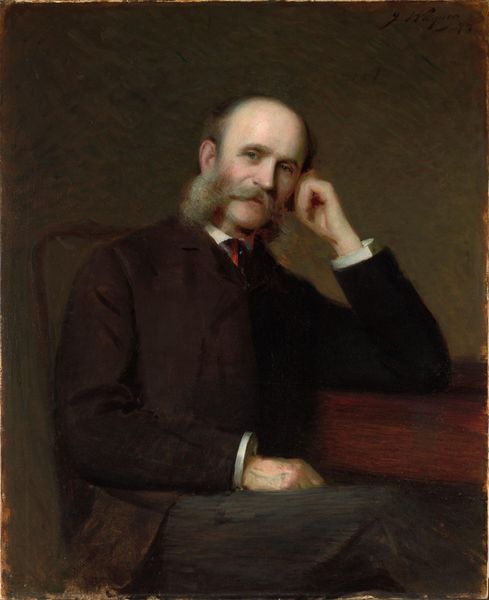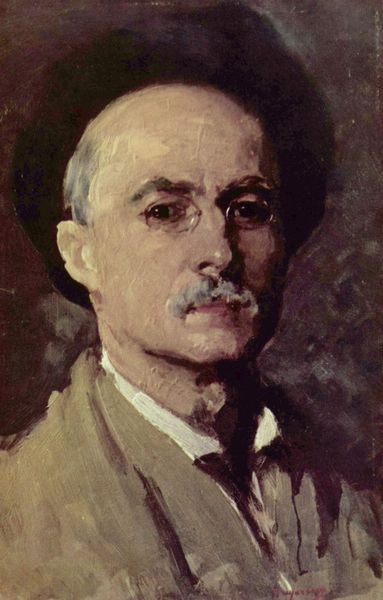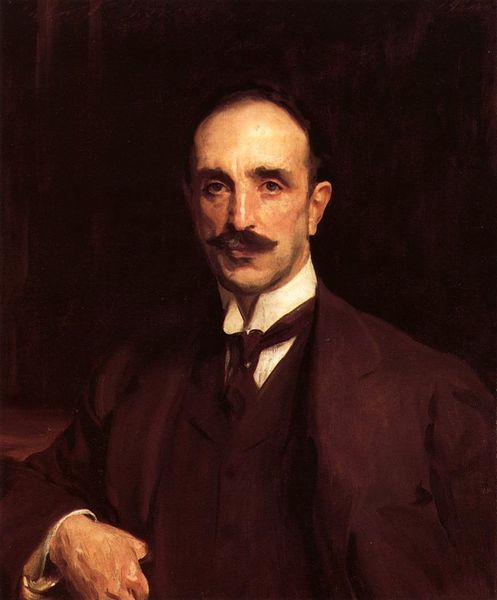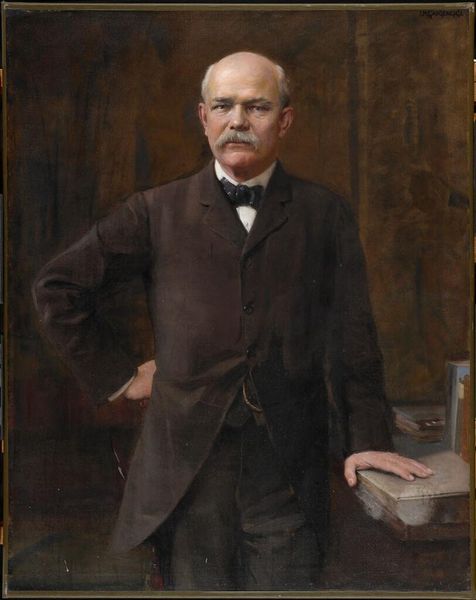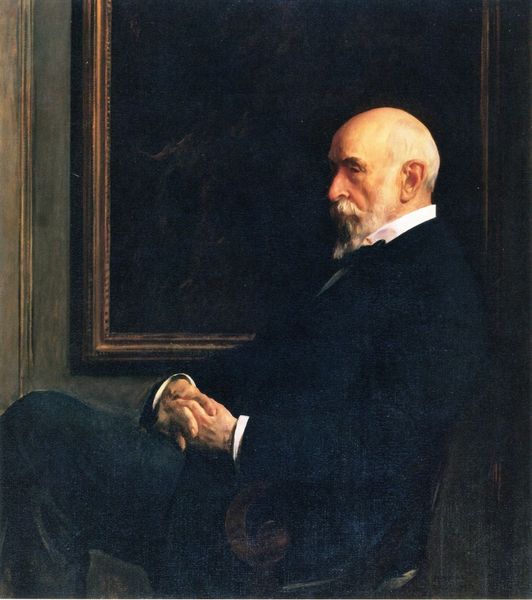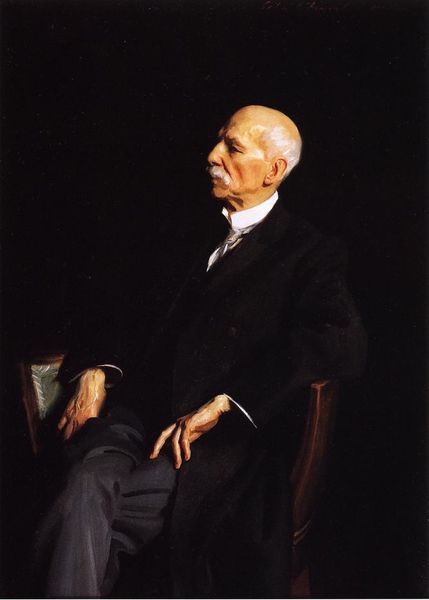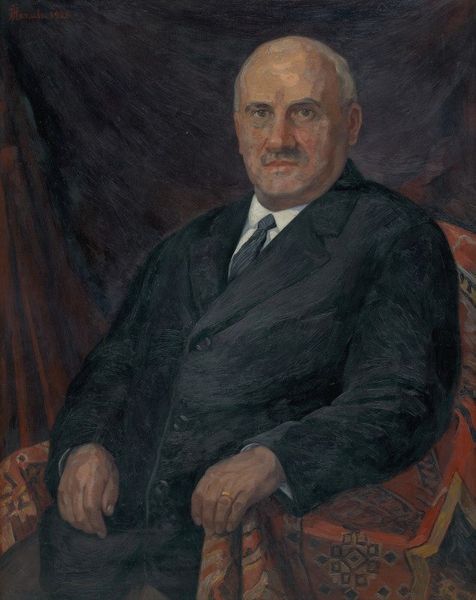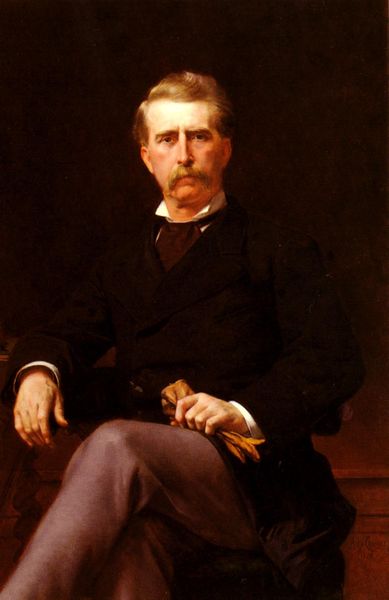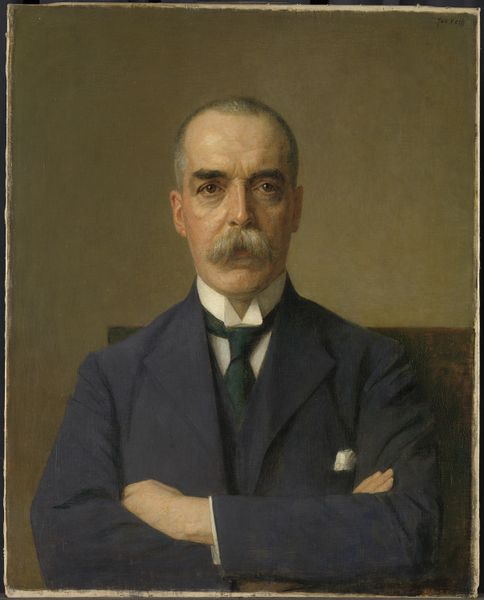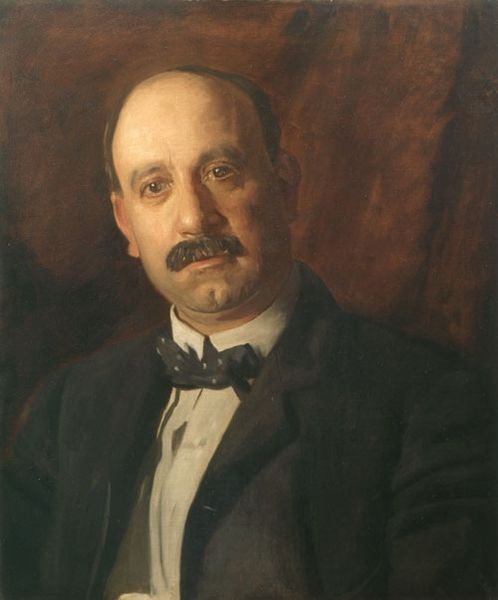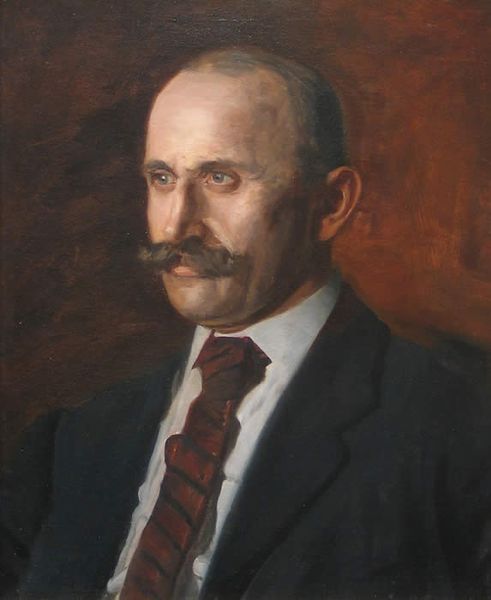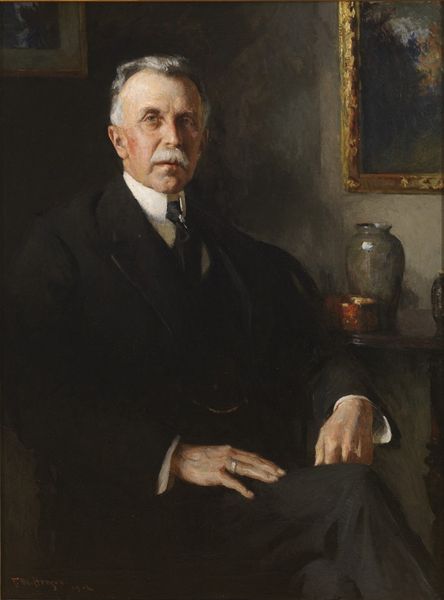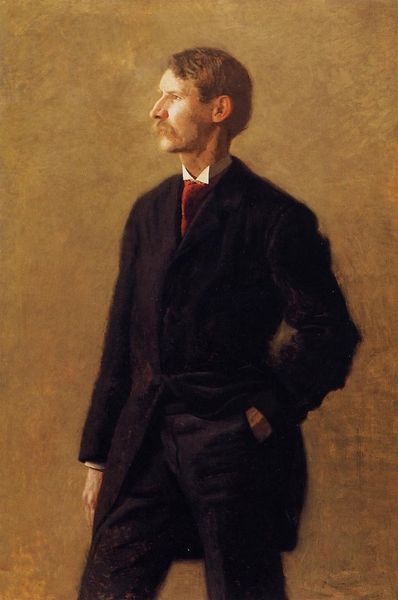
Copyright: Public domain
Editor: This is Tom Roberts’ oil painting, “Edward Ogilvie,” created in 1895. It’s a portrait of a distinguished gentleman, and what strikes me first is its restrained palette. It feels very formal and composed. How do you interpret this work? Curator: I see this portrait as a fascinating window into the social and political landscape of Australia at the end of the 19th century. Consider the sitter’s bearing – the dignified posture, the carefully groomed mustache. Roberts, an Australian artist, captured Ogilvie, a member of the landed gentry. What power dynamics might be at play here? Editor: So you’re saying it reflects class structures of the time? Curator: Exactly! The painting style itself, rooted in European academic traditions, is telling. It speaks to the aspirations of the Australian elite to align themselves with European models of respectability and civilization. But, does that ideal of ‘civilization’ account for indigenous Australians, their culture, or dispossession from land? What is Roberts implicitly excluding by painting Ogilvie in this manner? Editor: I never thought about the missing voices in a portrait like this before. Curator: It invites us to consider whose stories are being told and, perhaps more importantly, whose are being silenced. Roberts' choices of representing wealth are neither accidental nor neutral, and this approach, consciously or not, contributes to the narrative that erases the experience of First Australians. This allows us to connect what is in the frame to wider power dynamics. Does that perspective alter your view of the portrait? Editor: Absolutely. I’m struck by how a seemingly straightforward portrait can be so layered with social and historical meaning. Curator: And hopefully inspire us to look more critically at the art we encounter!
Comments
No comments
Be the first to comment and join the conversation on the ultimate creative platform.
